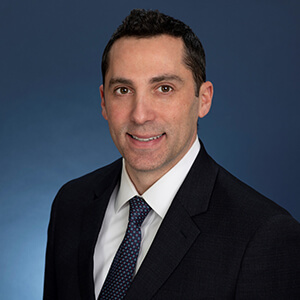Published March 24, 2023 | 5 min read
Key Points
- The FDA is getting increasingly comfortable with gene therapy as a safe and efficacious treatment option, but will continue to keep an eye on toxicity, particularly for high dose AAV.
- Research is moving towards specialized “one-time” therapeutics like gene therapy when possible; given the increased development and manufacturing costs associated, drug prices are likely to remain high.
- Tentative hope for Fabry, Huntington and DMD patients as early gene therapy trials show biomarker success. Whether this translates into improved functional outcomes remains to be seen.
- The bar has been raised for accelerated FDA approval of oncology medications in the wake of multiple accelerated medications that failed to demonstrate meaningful benefit.
- Personalized neoantigen vaccines are a new class to watch in the cancer immunotherapy field as recent clinical trials have been shown to be both safe and capable of producing a robust immunogenic response.
Gene Therapy and Immuno-oncology were heavily emphasized by KOLs at the RBC Capital Markets Healthcare Private Company Conference in December 2022. Dr. David Schaffer, Professor of Chemical and Biomolecular Engineering, Bioengineering, and Neuroscience at University of California, Berkeley, provided insight around emerging gene therapeutics and the recent regulatory trends for AAV treatments.
Dr. Jason Luke, Associate Professor of Medicine in the Division of Hematology/Oncology and the Director of the Cancer Immunotherapeutics Center within the UPMC Hillman Cancer Immunology and Immunotherapy Program, discussed the competitive landscape in immuno-oncology, and what types of immunotherapy treatments are particularly promising based on contemporary data.
The renaissance of gene therapy
According to Dr. Schaffer, after years of disappointments marked by CRLs and clinical holds, gene therapy has experienced a redemption arc in 2022 as several high-profile drugs have been approved by the FDA. These recent favorable decisions suggest that regulators are much more at ease with gene therapy in light of numerous successful clinical trials, which have demonstrated improved safety and efficacy.
Next generation drugs: Reforming the healthcare market
While gene therapies are proving to be efficacious, they are often tremendously expensive to develop and manufacture on a large scale. Three of the recent FDA approved gene therapies are in the multi-million dollar price range, with the Hemophilia B drug, Hemgenix, topping the list as the most expensive medication in the world at $3.5 million per treatment.
Although this price may seem prohibitive, Dr. Schaffer noted that one-time gene therapies like this, as opposed to frequent lifelong clotting factor infusions, could ultimately save the healthcare system more than $20 million dollars per patient. We will wait to see how insurers and public payers are able to reliably bear these costs.
Dr. Schaffer is also extremely optimistic about rapid gene therapy adoption, noting; “The recombinant protein therapy, the enzyme replacement therapy field, has been heading towards longer-duration therapies. The standard proteins that were the first generation products are very short lived. Patients would have to get dosed, in some cases, several times a week. That adds up to a situation where patients are going to experience a significant improvement in quality of life as a result of the gene therapy.”
Huntington’s and Fabry disease: Benefit pending functional outcomes
There is an ever-growing gene therapy landscape for multiple devastating conditions, including Huntington’s Disease, Wet Age-Related Macular Degeneration (AMD), as well as Fabry and Danon disease.
For diseases like Huntington’s, where no viable treatment method exists, gene therapy clinical trials offer hope. Early clinical trial data demonstrates around a 50% reduction in the mutated protein, which plays a central role in the Huntington’s pathogenesis. Reduction in the mutant protein has the potential to translate into better functional outcomes, particularly around motor symptoms for patients. While the safety signal for the high dose cohort was sobering, with additional risk mitigation measures in place, gene therapies for Huntington’s remain promising in the year ahead.
Gene therapies for Fabry disease are also showing encouraging preliminary results. A few companies have noted a significant increase in alpha-galactosidase activity (the enzyme that is deficient in Fabry and results in progressive lipid accumulation and subsequent cell damage). Dr. Schaffer is hopeful that the increased levels of enzymes will translate into clinical improvements for patients, particularly in regard to cardiac and kidney function, but this remains to be seen.
Gene therapy: Lingering safety concerns for high dose medications
While gene therapy on the whole has been deemed relatively safe, there are conditions where the FDA is paying close attention; specifically, when substantially higher doses than normal of AAV are being administered, as is the case for DMD. Vectors don’t distribute particularly well to muscle. To compensate for this issue, companies in this disease field have had to use extremely high doses. Some safety concerns have arisen, like HUS and increased liver toxicity. But overall, the preliminary data are favorable, with strong levels of microdystrophin and improvement in creatine kinase levels, and certain programs have shown cleaner safety.
The immunotherapy pipeline: Regulators seeking randomized phase III trials
Dr. Luke is optimistic about the recent developments in the immuno-oncology sector. He stressed, however, that while the FDA is eager to get drugs through, they are becoming increasingly cautious about approving a medication without a randomized phase III clinical trial.
“In disease settings where they are active options, and it’s not a breakthrough, if you are fundamentally replacing the standard of care with a new active agent, I think they are skeptical, and that is probably deservedly so,” says Dr. Luke. “What they want to see is transformative data. If you want your drug approved without a randomized trial, and you don’t have transformative data, then you need a randomized trial. The bar for what people thought was transformative needs to be reassessed.”
However, while the environment is improving, bottlenecks continue to persist in the clinical research field post COVID-19. Staffing of clinical trial nurses continues to be a major hurdle due to nursing shortages across the country. Finding patients who meet the study criteria and are able and willing to participate is another roadblock, but Dr. Luke argues that when you have attractive treatment options, patients will come. By and large, with longer timelines and recruitment difficulties, executing a clinical trial is now “somewhere in the range of two to five times as expensive as it used to be.” Drugs that do not show immediate activity are much quicker to fall by the wayside in today’s current climate.
Evidence that a personalized neoantigen approach may be beneficial in melanoma
Recent data suggests that neoantigen vaccines have potential to be a viable treatment option for cancer, particularly in combination with already existing therapeutics, like checkpoint inhibitors. These results are significant because in the adjuvant melanoma space, no combination has previously shown a benefit. In fact, previous combinations were decidedly negative.
According to Dr. Luke, “it isn’t clear yet and hasn’t been clear that a combo partner had any potential in adjuvant melanoma. So here we see not only is there a suggestion of benefit, but if it were to hold up without an increased hazard profile, it would be an enormous benefit. It would be a huge deal to the general practice in melanoma to just have a therapeutic agent.”
If these results were to persist in later phase clinical trials, this has the potential to be groundbreaking, not just for refractory melanoma treatment, but for neoantigen-based therapy as a whole.
BiTE technology has much to prove
Dr. Luke is skeptical that current BiTE technologies are going to be competitive in the current landscape. Recent BiTE clinical trials have shown modest results against small cell lung cancer (SCLC) with a less than 30% overall response rate in a non-randomized single arm trial. Furthermore, given the PK of this class of drug, weekly administrations would be required. This lack of patient centric focus, combined with lackluster results, suggests that this type of medication, if approved, will not be widely prescribed in its current form.
Hope for TIGIT and LAG3
Despite setbacks, Dr. Luke believes that there is still hope for anti-TIGIT as a viable immunotherapeutic. This is supported by the fact that most of the premier league biopharmaceutical companies have advanced at least one anti-TIGIT antibody through their pipeline over the last couple of years. Biotech players are investing in anti-TIGIT therapies, which suggests that there is internal evidence supporting its efficacy. Furthermore, more and more anti-TIGIT antibodies are being developed. It will be interesting to see the datasets and how clinically meaningful these treatments are. However, the competition is fierce with numerous companies exploring this therapy vertical, particularly given that some players have an inherent “ownership” of this space.
Emerging LAG3 therapies for melanoma, especially in combination with existing checkpoint inhibitors, are also showing encouraging results. Given the competition in this space, there is some appetite to combine as many checkpoint inhibitors as possible to determine if this would provide superior results. Whether LAG3 will be prove itself to be a useful therapeutic for other types of cancer remains to be seen, and will be something to watch out for in the coming years, particularly as other types of LAG3 approaches are trialed.
The future of TIL
While the lifespan for the first generation of TIL products will likely be quite short, the potential approval of TIL medications is at a “watershed” moment. However, these medications often come with significant side effects, due in part to high dose IL2 treatment. The next generation of gene modified TILs are much more intriguing, and hopefully can eliminate the lymphodepletion that is associated with the current formulation. It will be a race to see who can develop the most effective and safe TIL treatment.
Next generation IO
In terms of next generation immunotherapies, medication that has the potential to target “cold” tumors could be momentous for the field. Most of the current treatments on the market work exclusively for “hot” tumors (PDL1 activated, interferon high); new therapeutics aimed at addressing “cold” tumors, like colorectal and ovarian cancers, will be closely watched and highly anticipated. For future IO treatments, durability will remain top of mind.
This content is based on commentary and analysis from RBC Capital Markets’ Healthcare Private Company Virtual Conference on December 15-16, 2022. For more information about the conference, please contact your RBC representative.




